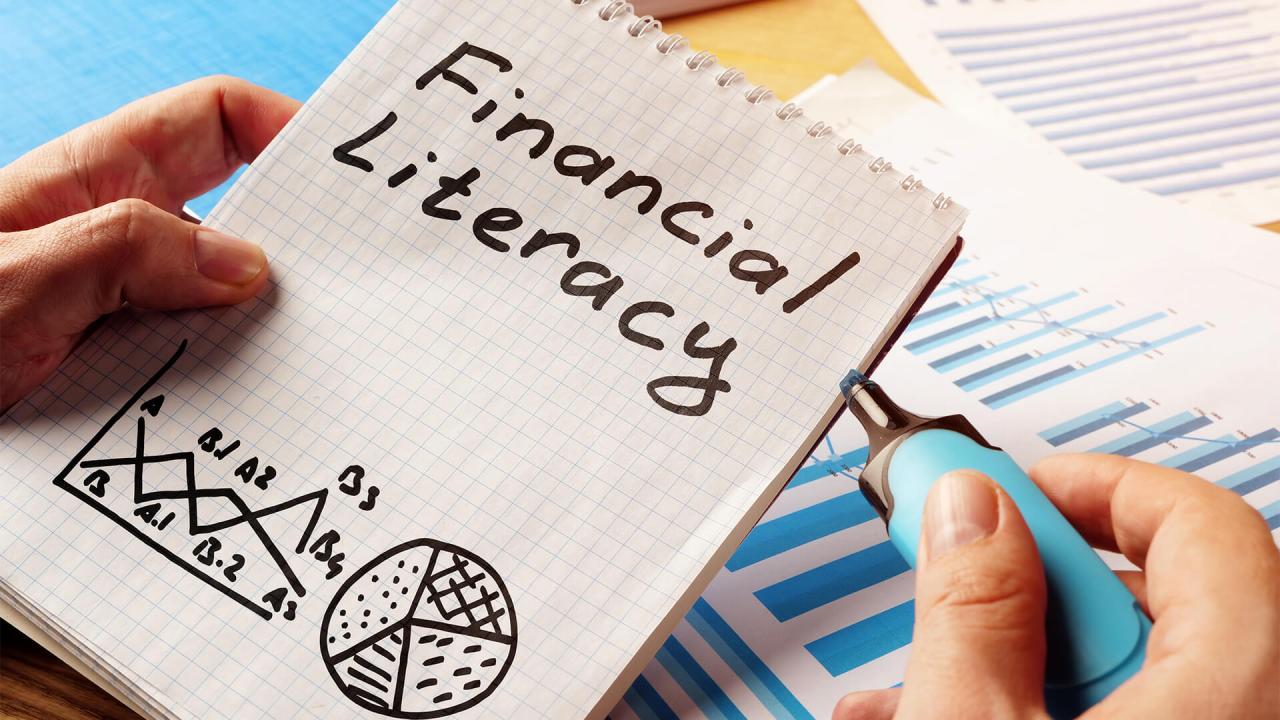In an increasingly complex and interconnected global economy, the ability to effectively manage money, make informed financial decisions, and plan for future prosperity is no longer a luxury but a fundamental necessity. For the younger generations, acquiring Youth Financial Literacy is paramount, serving as the bedrock for long-term economic stability, personal empowerment, and the pursuit of life goals. Far beyond simply balancing a checkbook, financial literacy encompasses a broad spectrum of knowledge and skills, from understanding debt and investments to budgeting and identifying scams. This comprehensive article delves into the critical importance of financial literacy for youth, exploring the compelling reasons why it’s more crucial than ever, dissecting the core components of effective financial education, navigating the pervasive challenges in its widespread adoption, and revealing the profound impact it can have on individual lives and the broader economy. For parents, educators, policymakers, and young people themselves, fostering robust financial literacy is an indispensable investment in a more secure and prosperous future.
Why Financial Literacy Matters for Youth

The need for financial literacy among young people has never been more pressing, driven by a confluence of evolving economic landscapes, technological advancements, and shifting societal norms.
A. Complex Modern Financial Landscape: Today’s financial world is far more intricate than that of previous generations.
1. Diverse Financial Products: Young people are exposed to a dizzying array of options, including credit cards, student loans, mortgages, investment apps, cryptocurrencies, and various insurance products. Without proper understanding, navigating these can be overwhelming and risky.
2. Digital Money Management: The shift from cash to digital payments, online banking, and mobile payment apps requires new skills for tracking spending and managing funds virtually.
3. Globalized Markets: Young people are increasingly exposed to global economic trends, international investments, and cross-border financial transactions, demanding a broader understanding of financial systems.
B. Rising Cost of Living and Debt Burdens: The economic realities faced by young people often include significant financial pressures.
1. Student Loan Debt: A substantial and growing burden, requiring careful management and long-term repayment strategies.
2. High Cost of Housing: Entering the housing market is increasingly challenging, necessitating robust savings and investment strategies from an early age.
3. Inflationary Pressures: Understanding inflation’s impact on purchasing power and savings is crucial for long-term financial planning.
C. Empowerment and Autonomy: Financial literacy provides young individuals with the tools to take control of their financial destinies.
1. Informed Decision-Making: Enables them to make wise choices about spending, saving, investing, and borrowing, avoiding common pitfalls.
2. Achieving Life Goals: Equips them to plan for major life events such as buying a home, starting a business, funding education, or retirement.
3. Reduced Financial Stress: Knowledge and control over finances significantly reduce anxiety and stress, contributing to better mental well-being.
D. Protection Against Financial Scams and Predatory Practices: In the digital age, financial scams (online fraud, phishing, cryptocurrency scams) are rampant. Financially literate youth are better equipped to identify and avoid deceptive schemes. They learn to be critical consumers of financial information.
E. Entrepreneurial Aspirations: For many young people with entrepreneurial dreams, understanding startup funding, cash flow management, budgeting, and investment is foundational for launching and scaling a successful business.
Core Components of Youth Financial Literacy
Effective financial literacy education for youth should be comprehensive, practical, and tailored to their developmental stages, covering a range of interconnected topics.
A. Earning and Income:
1. Sources of Income: Understanding different ways to earn money (wages, salaries, freelance income, investments).
2. Gross vs. Net Pay: Comprehending deductions like taxes (income tax, social security), health insurance, and retirement contributions from gross income.
3. Skills and Education’s Value: Recognizing how education, skills, and career choices impact earning potential.
4. Entrepreneurship Basics: Introduction to concepts like revenue, expenses, and profit for small businesses.
B. Budgeting and Saving:
1. Tracking Income and Expenses: Learning to monitor where money comes from and where it goes.
2. Creating a Budget: Developing a plan for spending and saving, allocating funds to needs, wants, and savings goals.
3. Saving Goals: Understanding the importance of setting short-term (e.g., for a gadget) and long-term (e.g., college, car, home) saving objectives.
4. Emergency Funds: The concept of saving for unexpected expenses as a financial safety net.
5. Compounding Interest: Grasping the power of interest earning interest over time, a fundamental principle of wealth growth.
C. Spending and Consumerism:
1. Needs vs. Wants: Differentiating between essential needs and discretionary wants.
2. Comparison Shopping: Learning to research and compare prices, quality, and value before making purchases.
3. Impulse Buying: Understanding the psychological triggers behind impulsive spending and strategies to avoid it.
4. Consumer Rights and Responsibilities: Knowing their rights as consumers and how to resolve disputes.
5. Digital Spending Habits: Awareness of how easy online and in-app purchases can lead to overspending.
D. Credit and Debt:
1. Understanding Credit: What credit is, how it works, and why a good credit score is important (e.g., for loans, housing, insurance).
2. Types of Debt: Distinguishing between “good” debt (e.g., for education or a home) and “bad” debt (e.g., high-interest credit card debt).
3. Interest Rates: How interest is calculated and its impact on the total cost of borrowing.
4. Responsible Credit Card Use: Learning to use credit cards wisely, pay balances in full, and avoid high-interest charges.
5. Student Loans: Understanding repayment options, interest accrual, and the long-term impact of student debt.
E. Investing and Wealth Building:
1. Basics of Investing: Introduction to concepts like stocks, bonds, mutual funds, and diversified portfolios.
2. Risk and Return: Understanding the relationship between investment risk and potential returns.
3. Long-Term Growth: The importance of starting early to leverage compounding and long-term market growth.
4. Retirement Planning (Early Introduction): The concept of saving for retirement through accounts like IRAs or 401(k)s.
5. Avoiding Scams: Identifying common investment scams and risky schemes.
Challenges in Youth Financial Literac

Despite its undeniable importance, achieving widespread and effective financial literacy among youth faces several significant obstacles that require a concerted, multi-stakeholder approach.
A. Lack of Standardized Curriculum in Schools: Many educational systems either lack comprehensive financial literacy programs or offer them as electives rather than mandatory courses, leading to inconsistent exposure.
- Solution: Mandate Comprehensive Education:
- Policy Advocacy: Advocate for state and national mandates for financial literacy education integrated into core curricula from elementary to high school.
- Teacher Training: Provide adequate training and resources for educators to confidently teach financial concepts.
- Interdisciplinary Approach: Integrate financial concepts into existing subjects like math, social studies, and economics.
B. Parental Discomfort or Lack of Knowledge: Many parents themselves may lack sufficient financial literacy or feel uncomfortable discussing money matters with their children, thus limiting learning opportunities at home.
- Solution: Empowering Parents:
- Parent Workshops: Offer workshops and resources for parents on how to teach financial literacy to their children effectively.
- Accessible Resources: Provide user-friendly online tools, apps, and guides for families to learn together.
- Lead by Example: Encourage parents to model responsible financial behavior.
C. Rapidly Evolving Financial Products and Technologies: The financial landscape changes quickly (e.g., cryptocurrencies, fintech apps), making it challenging to keep educational content relevant and up-to-date.
- Solution: Dynamic and Adaptive Education:
- Continuous Curriculum Updates: Regularly revise educational materials to reflect new financial products, technologies, and economic trends.
- Focus on Foundational Principles: Emphasize timeless concepts (e.g., budgeting, compounding interest, risk management) that remain relevant despite technological shifts.
- Incorporate Real-World Examples: Use current events and popular financial apps/trends as case studies.
D. Engagement Challenges and Perceived Irrelevance: Young people may view financial literacy as boring, complex, or irrelevant to their immediate lives, making engagement difficult.
- Solution: Make it Engaging and Relevant:
- Gamification: Incorporate game-based learning, simulations, and interactive apps to make learning fun and practical.
- Relate to Immediate Goals: Connect financial concepts to their short-term aspirations (e.g., saving for a concert, a new phone, entrepreneurial ventures).
- Peer-to-Peer Learning: Facilitate discussions and learning among peers, leveraging social influence.
- Real-World Scenarios: Use practical, relatable examples from daily life (e.g., budgeting for a trip, managing first credit card).
E. Socioeconomic Disparities: Access to quality financial education and resources can vary significantly based on socioeconomic background, exacerbating existing inequalities.
- Solution: Ensure Equitable Access:
- Community Programs: Develop free, accessible financial literacy programs in underserved communities.
- Digital Accessibility: Ensure online resources are available and culturally relevant to diverse populations.
- Partnerships: Collaborate with community organizations, non-profits, and libraries to extend reach.
F. Impact of Social Media and Peer Pressure: Social media often showcases aspirational lifestyles and can inadvertently promote impulsive spending or risky financial behavior (e.g., unchecked consumerism, get-rich-quick schemes), influencing youth negatively.
- Solution: Critical Thinking and Media Literacy:
- Teach Media Literacy: Equip youth to critically evaluate financial information and influences on social media.
- Promote Healthy Money Mindsets: Foster discussions about values, delayed gratification, and the difference between needs and wants.
- Highlight Responsible Influencers: Showcase creators who promote sound financial practices.
The Broader Impact for Society Through Financial Literacy
The widespread adoption of financial literacy among youth extends far beyond individual benefits, creating profound positive ripple effects across economies and societies.
A. Increased Economic Stability:
1. Reduced Household Debt: Financially literate individuals are less likely to accumulate unmanageable debt, leading to more stable household finances.
2. Higher Savings Rates: Greater understanding of compounding and future needs encourages higher savings, contributing to capital formation and economic growth.
3. Informed Investment Decisions: A more financially savvy populace makes better investment choices, leading to more efficient capital allocation in markets.
B. Reduced Poverty and Inequality:
1. Empowerment of Vulnerable Groups: Financial education can provide tools for individuals in lower-income brackets to break cycles of poverty and build generational wealth.
2. Improved Financial Inclusion: Understanding financial services encourages engagement with formal banking systems, credit, and investment opportunities.
C. Enhanced Social Mobility:
1. Access to Education and Opportunity: Financial planning skills enable youth to better afford higher education or vocational training, opening doors to better career opportunities.
2. Entrepreneurial Growth: Financially literate youth are better equipped to start and grow businesses, creating jobs and fostering innovation.
D. Stronger Consumer Protection:
1. Reduced Fraud Victims: A financially educated populace is less susceptible to scams and predatory lending practices, protecting individuals and safeguarding collective wealth.
2. Informed Market Participants: Consumers who understand financial products demand greater transparency and accountability from financial institutions.
E. Improved Public Health and Well-being:
1. Reduced Financial Stress: Financial stability is strongly linked to mental and physical health, leading to lower rates of stress-related illnesses.
2. Better Life Outcomes: Financially literate individuals often exhibit greater overall life satisfaction and stability.
Strategies for Fostering Youth Financial Literacy
Achieving widespread financial literacy requires a collaborative and sustained effort involving multiple stakeholders and innovative approaches.
A. Integrate Financial Education Across Curricula:
1. Early Introduction: Start teaching basic money concepts in elementary school (e.g., saving for a toy).
2. Age-Appropriate Progression: Introduce more complex topics (e.g., credit, investing) incrementally as students mature.
3. Mandatory Courses: Advocate for dedicated, standalone financial literacy courses in high schools, or strong integration into math, economics, and life skills classes.
B. Empower Educators and Parents:
1. Teacher Professional Development: Provide robust training, ongoing support, and high-quality resources for teachers to deliver engaging financial education.
2. Parental Engagement Programs: Develop workshops, toolkits, and interactive online resources to help parents initiate money conversations at home.
3. Lead by Example: Encourage adults to model responsible financial behaviors for young people.
C. Leverage Technology and Gamification:
1. Interactive Apps and Games: Develop engaging mobile apps, online games, and simulations that teach financial concepts in a fun, experiential way.
2. Virtual Reality (VR) Simulations: Utilize VR for immersive scenarios like managing a budget, investing in a stock market simulation, or experiencing the consequences of debt.
3. Personalized Learning Platforms: Use AI to tailor financial education content to individual learning styles and needs.
D. Foster Real-World Experiential Learning:
1. Student Banking Programs: Partner with local banks to establish in-school banking programs where students can manage small accounts.
2. Entrepreneurship Projects: Encourage school-based businesses or entrepreneurial competitions that teach practical financial management.
3. Community Partnerships: Connect youth with local financial institutions, credit unions, and financial advisors for workshops, mentorship, and internships.
4. Simulated Markets: Create mock stock market challenges or budgeting simulations.
E. Develop Accessible and Culturally Relevant Resources:
1. Multilingual Materials: Provide financial education content in multiple languages to reach diverse communities.
2. Culturally Sensitive Content: Ensure examples and scenarios are relatable and respectful of various cultural backgrounds.
3. Free Online Platforms: Develop and promote free, high-quality online resources and courses accessible to everyone.
F. Promote Media Literacy and Critical Thinking:
1. Analyze Influencer Content: Teach youth how to critically evaluate financial advice from social media influencers and online sources.
2. Identify Scams: Regularly update and educate youth on new types of financial scams and how to protect themselves.
3. Discuss Advertising: Analyze how marketing influences spending habits and financial decisions.
Conclusion
Investing in youth financial literacy is not merely an educational endeavor; it’s a strategic imperative for building resilient individuals, stable families, and robust economies. By equipping young people with the knowledge, skills, and confidence to navigate the complexities of personal finance, we empower them to make informed decisions that will shape their futures and contribute positively to society. The future belongs to those who are financially astute, and by fostering this essential literacy, we lay the groundwork for generations of prosperity and well-being. The time to educate our future wealth builders is now.










